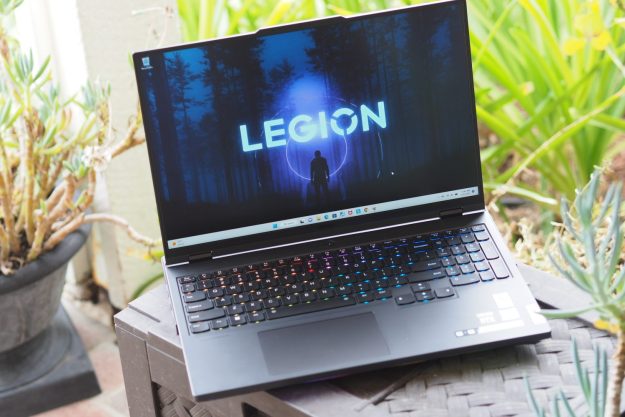Ski jumping, figure skating, and all those other Olympic sports you love watching — wouldn’t they be even better in virtual reality? That’s just one part of a tech mash-up between the International Olympic Committee and Intel announced at an event in New York City Wednesday morning.
“Sport has to go where the people are, and many people — in particular many young people — are living a digital life,” IOC President Thomas Bach explained. “So we have to go with sports to where they are living, in their digital world, in their virtual reality.”
Intel said it plans to broadcast 16 events live and offer another 16 on demand from the 2018 Olympic Games in South Korea, broadcast using Intel’s True VR technology — the same tech Intel is using to broadcast one MLB game every Tuesday.
True VR involves the use of a special, 12-camera video capture array meant to record 180 degrees of action. It captures a terabyte of data every minute, which is processed and transcoded by mobile production units before streaming out to your headset. Expect to see this live on the Olympic Channel, the the multiplatform destination where the excitement of the Olympic Games is broadcast year round.
Virtual reality has been slow to catch on with consumers, with many content creators and sports groups and teams playing wait and see. Where’s the NFL, for example? Intel CEO Brian Krzanich acknowledged the chicken and egg problem at the event, and said that VR from the Olympics should ensure a great supply of content.
“This fan experience around sports is just kicking off. Before we hype it too high we want to make sure that the experience is really great,” he said.
But the partnership goes well beyond VR: Intel plans to bring a host of technologies to bear on Pyeongchang 2018. There’s drone technology, for example, which should enable not just fantastic camera angles but a new form of pyrotechnics. In recent years, the company has staged events worldwide using arrays of drones to perform interactive light shows — think of them as modern-day fireworks, Krzanich noted.
Drones should let cameras follow ski jumpers as they soar through the skies and other athletes as they wind down mountain paths. That presents unique problems, as well; at an Alpine Skiing World Cup event in early 2016, a drone nearly crashed into an athlete. Krzanich said new technologies and rapid advancements in drones, in particular in object avoidance, should prevent this from being a problem this time around. Bach noted that the IOC had signed off on the use of the drones.
Intel stressed how the partnership would improve the experience for Olympic fans, citing another technology: Intel freeD tech. This involves arrays of 38 cameras that allow Matrix-style camera pivots around a scene, which let the viewer watch the action from any angle. Intel calls it “volumetric,” and if NBC can broadcast with this, it should make for far more dynamic viewing.
Then there’s 5G technology, which was heavily hyped at the CES 2017, in spite of the fact that it’s still years from deployment in the United States. (Here’s everything we know about 5G today.) The advanced cellular network promises more than just speed: It will let viewers gain insights directly from athletes, deliver a wider array of content to broadcasters, and give fans the opportunity to experience the games anywhere, Intel said.
Deployment of such a technology at the Korean games should be a key test of the new technology: Will it allow us to see down the giant slalom as if we were on the slopes, or will it stutter and lag, as slower cellular technologies are known to do?
Finally, Intel says it plans to use artificial intelligence to allow people to better understand the action and events they are watching, and to compare the performance of athletes faster.
“It’s not just about tech, it’s about changing the experience and bringing the experience to more people — and bringing a different experience,” Krzanich said. “The games are truly in transition.”


